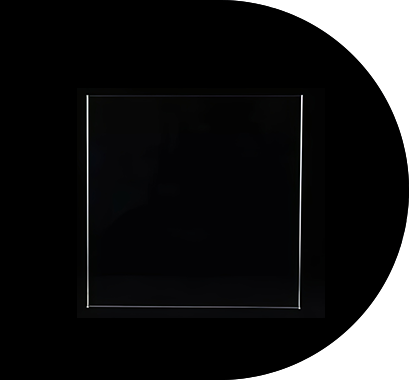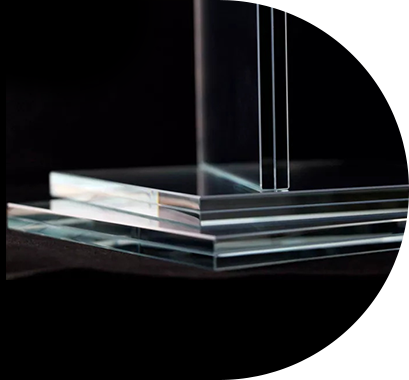In an era defined by digital interfaces, high-precision optics, and architectural transparency, the demand for anti-reflective (AR) glass has surged across industries ranging from consumer electronics to solar energy, museum display cases to aerospace engineering. Unlike standard glass that reflects a significant portion of incident light, AR glass is engineered to minimize surface reflections through advanced optical coatings or nanostructured surfaces, thereby enhancing clarity, reducing glare, and improving overall visual performance.
This technology, once reserved for specialized scientific instruments, has now become integral to everyday applications — from smartphone screens and eyeglasses to photovoltaic panels and augmented reality (AR/VR) headsets. Its ability to enhance visibility under varying lighting conditions while maintaining structural integrity makes it a critical component in modern design and engineering.
This article explores the underlying principles, manufacturing techniques, and expanding applications of anti-reflective glass, highlighting its transformative impact on both consumer experience and industrial innovation.
The Science Behind Anti-Reflection
Light reflection occurs when there is a change in refractive index between two media — such as air and glass. Standard soda-lime glass reflects approximately 4–8% of incoming visible light at each surface, which can result in distracting glare, reduced contrast, and diminished image quality. In multi-surface environments like display screens or camera lenses, these reflections can compound, further degrading optical performance.
Anti-reflective glass addresses this challenge through one of two primary mechanisms:
Thin-Film Coating Technology : Multiple layers of dielectric materials with varying refractive indices are deposited onto the glass surface. These layers cause destructive interference of reflected light waves, effectively canceling out glare while allowing more than 99% of light to pass through.
Nanostructured Surface Texturing : Inspired by the eyes of moths and other nocturnal creatures, some AR glasses utilize sub-wavelength surface structures that gradually transition the refractive index between air and glass. This "moth-eye" effect scatters light at the microscopic level, suppressing reflections without the need for chemical coatings.
Both approaches achieve the same goal — enhanced light transmission and minimized visual interference — but differ in terms of durability, cost, and suitability for specific applications.
Manufacturing Techniques and Material Considerations
Producing high-performance anti-reflective glass involves precision manufacturing processes tailored to the intended use:
Magnetron Sputtering : A widely used method for applying multi-layer thin-film coatings in controlled vacuum environments. It allows for fine-tuned control over layer thickness and material composition.
Sol-Gel Processing : Involves dipping or spin-coating glass substrates with liquid precursors that harden into anti-reflective films upon curing. Often used for cost-effective, large-scale production.
Etching and Nanoimprint Lithography : Employed to create textured anti-reflective surfaces on glass, particularly in high-end optical and photonic applications.
Lamination and Hybrid Approaches : Some manufacturers integrate AR treatments into laminated glass systems, combining anti-glare properties with additional benefits such as impact resistance or electromagnetic shielding.
Material selection also plays a key role. While traditional float glass remains common, borosilicate, aluminosilicate, and ultra-thin flexible glass are increasingly favored for their thermal stability, scratch resistance, and compatibility with curved or touch-sensitive displays.
Applications Across Diverse Industries
The versatility of anti-reflective glass has led to its adoption in a wide array of fields, each leveraging its unique optical advantages:
1. Consumer Electronics
Smartphones, tablets, and laptop screens often feature AR coatings to improve readability in bright environments, reduce eye strain, and enhance touchscreen responsiveness by minimizing ambient interference.
2. Optical Instruments and Eyewear
High-end cameras, microscopes, telescopes, and prescription eyeglasses benefit from AR-treated lenses that eliminate ghosting, increase contrast, and allow for sharper imaging.
3. Solar Energy
Photovoltaic panels equipped with AR glass maximize light absorption, boosting energy conversion efficiency by up to 4% compared to untreated glass covers. This improvement translates into higher output and faster return on investment for solar farms and rooftop installations.

4. Architecture and Interior Design
Museum display cases, retail windows, and luxury interior partitions use AR glass to present objects without distracting reflections, offering a near-invisible barrier that enhances aesthetic appeal and engagement.
5. Automotive and Aerospace Displays
From heads-up displays (HUDs) to cockpit instrumentation, AR glass improves pilot and driver visibility by eliminating glare from sunlight or artificial lighting, ensuring critical information remains legible at all times.
6. Augmented and Virtual Reality Devices
AR/VR headsets rely on anti-reflective components to deliver immersive visuals by preventing internal reflections that could disrupt image clarity or cause visual fatigue.
Each application demands a tailored approach to coating formulation, hardness, and environmental resilience, reflecting the adaptability of AR glass technology.
Integration with Smart and Adaptive Systems
As the boundaries between physical and digital experiences blur, anti-reflective glass is increasingly being integrated into smart glass technologies , where it works alongside electrochromic, photochromic, or liquid crystal layers to dynamically adjust transparency and reflectivity based on environmental conditions.
Additionally, in touchscreens and interactive displays, AR coatings are being optimized to work seamlessly with fingerprint-resistant layers and haptic feedback systems, enhancing both usability and user satisfaction.
In the realm of IoT and smart buildings, AR glass is finding new roles in sensor-integrated façades, transparent OLED displays, and gesture-controlled interfaces — pushing the limits of what glass can do beyond mere visibility.
Challenges and Limitations
Despite its many benefits, anti-reflective glass is not without challenges:
Durability Concerns : Thin-film coatings can be susceptible to scratching or abrasion, especially in high-touch environments. Advances in hard coat development aim to address this limitation.
Cost Implications : High-performance AR treatments, particularly those involving nanostructuring or multi-layer deposition, can significantly increase manufacturing costs.
Environmental Exposure : Outdoor applications must contend with UV degradation, moisture ingress, and thermal cycling, requiring robust sealing and protective measures.
Cleaning and Maintenance : Some AR surfaces attract dust more easily or require specific cleaning agents to avoid damaging the delicate coatings.
Ongoing research focuses on developing self-healing coatings, hybrid organic-inorganic materials, and scalable nanofabrication methods to overcome these hurdles.
Innovations and Future Trends
Looking ahead, several promising advancements are shaping the future of anti-reflective glass:
Biomimetic Surfaces : Drawing inspiration from nature, researchers are exploring bio-inspired textures that offer superior anti-reflective performance and hydrophobicity.
Flexible and Foldable AR Films : Designed for next-generation foldable electronics, these films maintain optical clarity even under repeated bending or stretching.
Wearable Optics : Integration of AR glass into lightweight, transparent waveguides for augmented reality spectacles and heads-up navigation systems.
Sustainability-Driven Solutions : Development of eco-friendly coating materials and recycling-compatible glass compositions to support circular economy goals.
These innovations suggest that anti-reflective glass will continue to evolve, not only as a passive optical enhancer but as an active participant in the intelligent systems of tomorrow.





